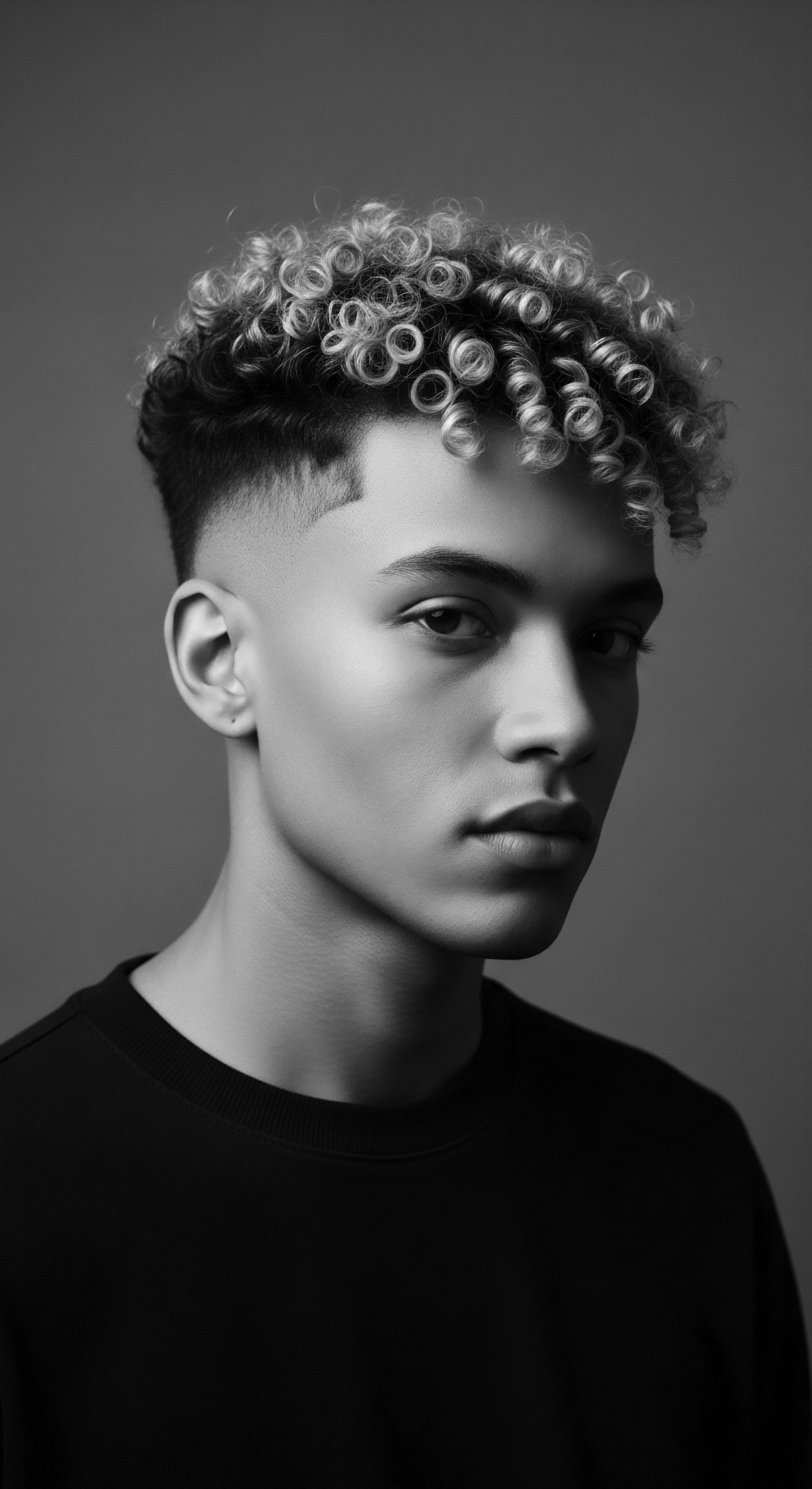
Fundamentals
The Head Covering Culture, at its fundamental stratum, represents the enduring practices of cloaking one’s hair with various textiles or materials. This tradition, spanning diverse cultures and epochs, finds a profound resonance within the experiences of Black and mixed-race communities. It carries meanings that range from practical utility, such as safeguarding delicate hair strands from environmental elements, to deeply symbolic expressions of identity, spiritual devotion, and social standing. The covering of the head frequently acts as a visible marker, a declaration of belonging, or a silent testament to a journey of resilience and self-possession.
Consider the elemental aspect of hair itself ❉ a precious filament of protein emerging from the scalp, susceptible to the rigors of daily existence. For textured hair, with its unique coily, curly, and kinky formations, vulnerability to breakage and moisture loss necessitates deliberate care. Head coverings, in their simplest form, provide a physical shield.
They offer protection from the sun’s drying rays, the friction of everyday movement, or the subtle abrasion from various surfaces. This practical function, often overlooked in modern discourse, served as a foundational impetus for ancestral hair practices, safeguarding hair health long before the advent of contemporary conditioning products.
Within the heritage of textured hair, the act of covering the head is also a gesture of preservation. It extends the longevity of intricate styles, allowing for less frequent manipulation, which in turn reduces stress on the hair shaft. This ancient wisdom, passed through generations, understood the intrinsic needs of these particular hair types, recognizing that gentle handling and consistent safeguarding contribute to robust strands. The choice of material, from the smooth glide of silk to the comforting embrace of cotton, has always played a role in this protective endeavor, consciously selected for its interaction with the hair.
The Head Covering Culture, fundamentally, embodies a historical and ongoing practice of hair adornment and protection, holding practical, social, and spiritual significance across various communities, particularly those with textured hair.
Beyond mere function, the simple meaning of head coverings expands into realms of personal expression and communal cohesion. A scarf, a wrap, or a bonnet can communicate without words. It speaks of a preference for modesty, an adherence to spiritual beliefs, or a celebration of cultural roots.
For many, it is a way to express individuality while simultaneously connecting to a larger collective identity. The threads of a fabric can carry the weight of generations, linking present choices to a deep and unbroken lineage of cultural understanding.

Early Manifestations of Head Covering
From the dawn of human adornment, societies recognized the head as a focal point for both practical shielding and social signaling. Early head coverings were rudimentary, fashioned from readily available natural elements such as animal skins, woven plant fibers, or even simple leaves, adapting to the immediate needs of warmth, sun protection, or ceremonial display. In many indigenous African societies, long before the transatlantic journeys, head adornment spoke volumes about a person’s age, marital status, or tribal affiliation. These were not mere coverings; they were extensions of identity, carefully crafted and imbued with communal meaning.
- Utilitarian Protection ❉ Protecting hair and scalp from harsh elements like intense sun, dust, or biting winds, a practical necessity in many ancestral landscapes.
- Ceremonial Significance ❉ Employed in rituals, rites of passage, or spiritual gatherings, signaling sacred moments or a connection to the divine.
- Social Communication ❉ Indicating social standing, marital status, age, or tribal belonging through specific styles, colors, or materials.
This early understanding of head coverings as both a protective layer and a medium for non-verbal communication laid the groundwork for the more complex meanings that would evolve through history, particularly within communities whose hair textures presented unique care considerations.
| Historical Context Pre-Colonial African Societies |
| Primary Function for Textured Hair Protection from environmental factors, extension of styled hair, and communal identity markers. |
| Historical Context Slavery and Post-Emancipation Eras (Americas) |
| Primary Function for Textured Hair Forced concealment turned into resistance, protection from harsh labor conditions, and maintenance of hygienic practices. |
| Historical Context Modern Natural Hair Movement |
| Primary Function for Textured Hair Moisture retention, reduction of friction, style preservation, and a powerful statement of cultural pride and self-acceptance. |
| Historical Context The functions of head coverings for textured hair have consistently blended practical care with deeply embedded social and cultural expressions across time. |
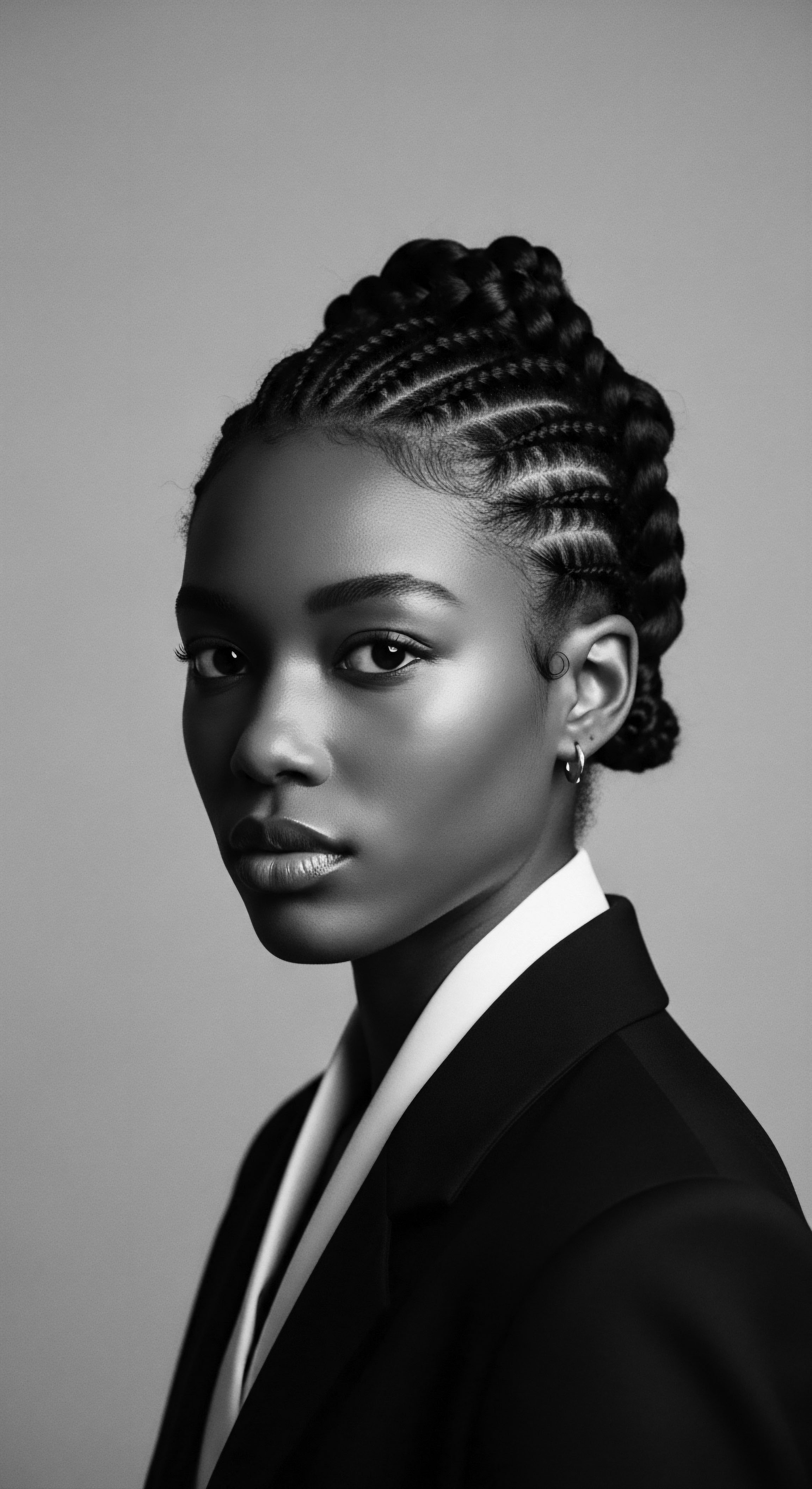
Intermediate
Moving beyond the basic understanding, the Head Covering Culture encompasses a rich continuum of practices and philosophies, particularly vibrant within communities of African descent. Its meaning transcends simple fabric application; it speaks to the preservation of cultural memory, the navigation of identity, and the safeguarding of textured hair’s intrinsic properties through generations. The act of covering one’s head, whether with a carefully folded headwrap, a soft bonnet for sleep, or a ceremonial scarf, becomes a dialogue with the past, an acknowledgment of the present, and a hopeful gesture towards the future.
From an intermediate perspective, understanding the Head Covering Culture requires recognizing its adaptive nature. It has shifted and redefined itself in response to historical pressures, societal perceptions, and the enduring spirit of communities. The specific ways in which hair is veiled or adorned often carries layered meanings, comprehensible to those steeped in the particular cultural heritage.
For example, the vibrant patterns and tying methods of West African gele are not merely aesthetic choices; they can signal a woman’s marital status, economic standing, or even her regional origin. This depth of communication imbues each wrapped head with a story, an unfolding narrative of personal and collective history.
The Head Covering Culture, at its intermediate understanding, reflects a dynamic interplay of practical care, cultural adaptation, and profound identity expression within textured hair communities.

The Tender Thread ❉ Living Traditions of Care and Community
The practical application of head coverings in textured hair care represents a profound tender thread connecting ancestral wisdom with contemporary wellness practices. For hair types prone to dryness and structural fragility, like many coily and kinky textures, maintaining moisture is paramount. A significant body of anecdotal evidence, supported by the lived experiences of countless individuals, affirms the role of head coverings, particularly those made from smooth, non-absorbent materials like silk or satin, in retaining the hair’s natural oils and applied emollients. This protective layer reduces friction against rough surfaces such as cotton pillowcases, which can strip moisture and cause breakage, especially during sleep.
Grace Eleyae, founder of a company specializing in silk and satin-lined wraps, notes, “In my community, wrapping our hair was for protection and to extend styles. There were never very many products that catered to the type and amount of moisture needed for Black hair so the longer we could extend a style, the better. It meant less manipulation and damage to our strands.” This highlights a direct correlation between head coverings and preserving hair integrity, allowing for less frequent manipulation and promoting longer, healthier strands.
Moreover, the communal aspect of Head Covering Culture is deeply ingrained. Historically, the shared practice of head wrapping created bonds among women, a silent language of shared experiences and resilience. During the brutal era of enslavement, when hair was often neglected or forcefully shorn, headwraps became a means of maintaining dignity and hygiene, even if mandated by oppressive forces.
The visual consistency of wrapped heads could signal solidarity and covert communication, a testament to collective spirit amidst unimaginable hardship. This collective history continues to inform the sense of community observed today when individuals gather to share wrapping techniques or celebrate the cultural meaning of their headwear.
The tender thread of care extends beyond the physical realm into the emotional and spiritual well-being tied to hair. For many with textured hair, the journey of self-acceptance and appreciation for their natural patterns often involves reconnecting with traditional practices, including head covering. It serves as a reminder of ancestral resilience and a conscious choice to honor one’s unique heritage. This intertwining of physical care and spiritual grounding speaks to a holistic approach to wellness, where external practices reflect internal reverence for self and lineage.

Cultural Adaptations and Expressions
The adaptations of head coverings across the African diaspora illustrate a powerful story of cultural continuity and creative resistance. As Africans were forcibly dispersed across the Americas and the Caribbean, they carried with them the ancestral knowledge of hair care and adornment. While oppressive regimes attempted to strip away their identities, often mandating head coverings as symbols of servitude, these communities ingeniously transformed these requirements into expressions of defiance and beauty.
- The Tignon Laws ❉ In 18th-century Louisiana, the Spanish colonial Governor Esteban Rodriguez Miró enacted laws, known as the Tignon Laws, forcing free women of color to cover their hair with a tignon. This measure aimed to suppress their perceived attractiveness and social influence, which rivaled that of white women. However, these women, demonstrating remarkable artistry and spirit, responded by crafting elaborate tignons from luxurious fabrics, adorned with jewels and feathers, transforming a symbol of subjugation into a mark of distinction, wealth, and sophisticated style. This historical example powerfully illuminates the Head Covering Culture’s deep connection to textured hair heritage and Black hair experiences, showcasing how an act of mandated concealment was subverted into an act of profound self-expression and cultural affirmation.
- Caribbean Interpretations ❉ In islands like Jamaica and Trinidad, headwraps became integral to daily life, blending African influences with new regional aesthetics. They are often vibrant, reflecting the colorful spirit of Caribbean cultures.
- Modern Resurgence ❉ The Natural Hair Movement of the late 20th and 21st centuries has seen a resurgence of head wraps and coverings as symbols of pride, protest, and a return to ancestral aesthetics, moving away from Eurocentric beauty standards.
These adaptations affirm that Head Covering Culture is not static. It remains a living, breathing tradition, continuously reinterpreted and reaffirmed by new generations who recognize its enduring power as a statement of identity and a testament to heritage. The choices made about hair covering become deliberate acts of reclaiming narratives and celebrating cultural legacy.

Academic
The Head Covering Culture, from an academic and expert-driven perspective, represents a complex sociocultural phenomenon with deeply rooted anthropological, historical, and biological underpinnings, particularly salient within diasporic communities with textured hair. Its explanation reaches beyond superficial observance, offering a multi-layered interpretation that considers its adaptive evolution, its role as a repository of ancestral knowledge, and its ongoing significance in negotiating identity, health, and societal perception. This phenomenon acts as a tangible manifestation of cultural continuity, navigating forces of assimilation, resistance, and self-determination across generations.
The intellectual understanding of Head Covering Culture demands an examination of its diverse perspectives and interconnected incidences across various fields of study. It is a lens through which we can scrutinize the politics of appearance, the sociology of adornment, and the biological specificities of textured hair that have historically shaped care practices. The rigorous analysis of its meaning transcends a singular definition, embracing a dynamic interplay of practical necessity, spiritual conviction, and socio-political declaration.

Echoes from the Source ❉ Elemental Biology and Ancient Practices
The inherent biology of textured hair forms a foundational understanding for the pervasive practice of head covering. Textured hair, characterized by its helical structure and often lower cuticle count, exhibits a distinct vulnerability to environmental stressors and mechanical damage compared to straight hair. A research study, published in the journal Cosmetics, (Markiewicz & Idowu, 2024) indicated that textured hair demonstrates increased sensitivity to UV radiation (UVR)-induced changes, with primary molecular targets represented by chemical groups in keratins.
The study further noted that pre-treatment of hair with a conditioner had protective effects against structural damage and oxidative stress caused by UVR. This scientific insight provides a contemporary validation for the ancient practice of physical concealment as a primary defense mechanism against sun exposure, a challenge faced by communities residing in sun-drenched climes for millennia.
Ancestral practices, therefore, often centered on safeguarding these delicate strands. Head coverings in many African societies served not only as markers of status or spiritual reverence but also as practical shields against the very environmental elements now being quantified by modern dermatological research. The materials chosen—from tightly woven natural fibers to later, traded silks—were instinctively selected for their ability to protect, retain moisture, and minimize external stressors.
This convergence of empirical observation over centuries and contemporary scientific inquiry illustrates a continuous thread of understanding regarding the unique care requirements of textured hair. The “Echoes from the Source” reflect a profound, embodied knowledge that predates formal scientific method yet aligns with its findings, underscoring the wisdom embedded within these time-honored traditions.
The fundamental biology of textured hair, with its increased susceptibility to environmental damage, provides a scientific basis for the ancestral and enduring practice of head covering for protection.
Furthermore, the use of head coverings in ancient civilizations speaks to a deeper connection to the holistic well-being of the individual. In Nubian and ancient Egyptian cultures, head adornments, including wigs and specific head coverings, were intertwined with notions of divinity, royalty, and societal structure. These coverings were not solely for appearance; they were part of a comprehensive system of self-presentation and care, encompassing spiritual and physical dimensions.
The understanding of hygiene, the need to preserve intricate hairstyles over extended periods, and the cultural reverence for the head itself, all contributed to the pervasive nature of head covering. This comprehensive approach, where beauty, health, and spiritual alignment coalesced, exemplifies a sophisticated ancestral perspective on human flourishing.
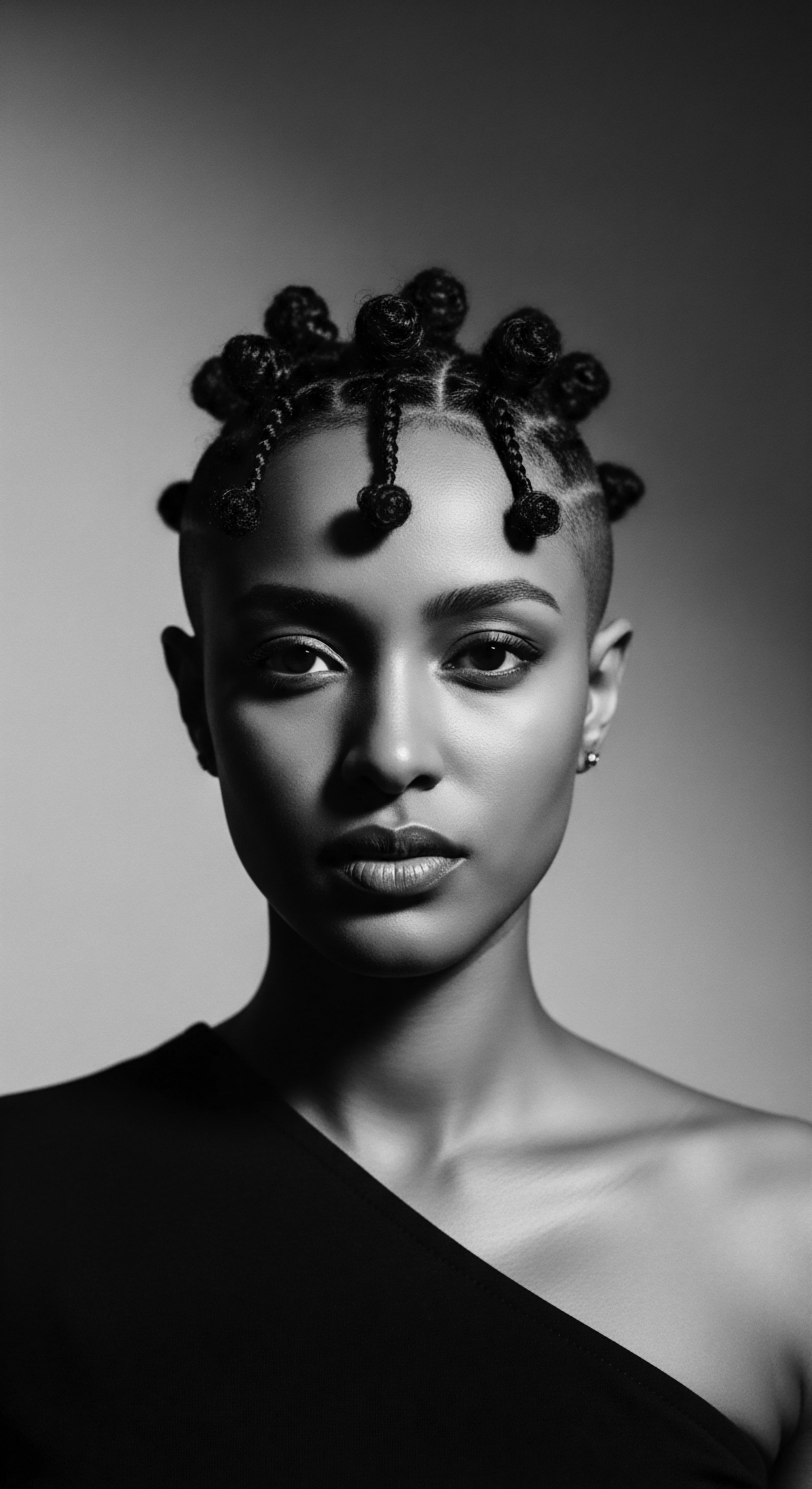
Biological Imperatives and Environmental Adaptation
- UV Radiation Protection ❉ Textured hair is more susceptible to UVR damage, which can lead to protein degradation and bleaching. Head coverings offer a direct physical barrier against harmful solar radiation, a practice intuitively adopted by ancestors residing in equatorial regions.
- Moisture Retention ❉ The structural characteristics of textured hair often lead to faster moisture loss. Smooth, occlusive coverings, particularly at night, minimize evaporation and friction, supporting the hair’s natural hydration balance.
- Physical Integrity ❉ Protecting hair from mechanical abrasion, dust, and debris in daily activities, especially for those engaged in agricultural or labor-intensive work, reduces breakage and preserves hair length.
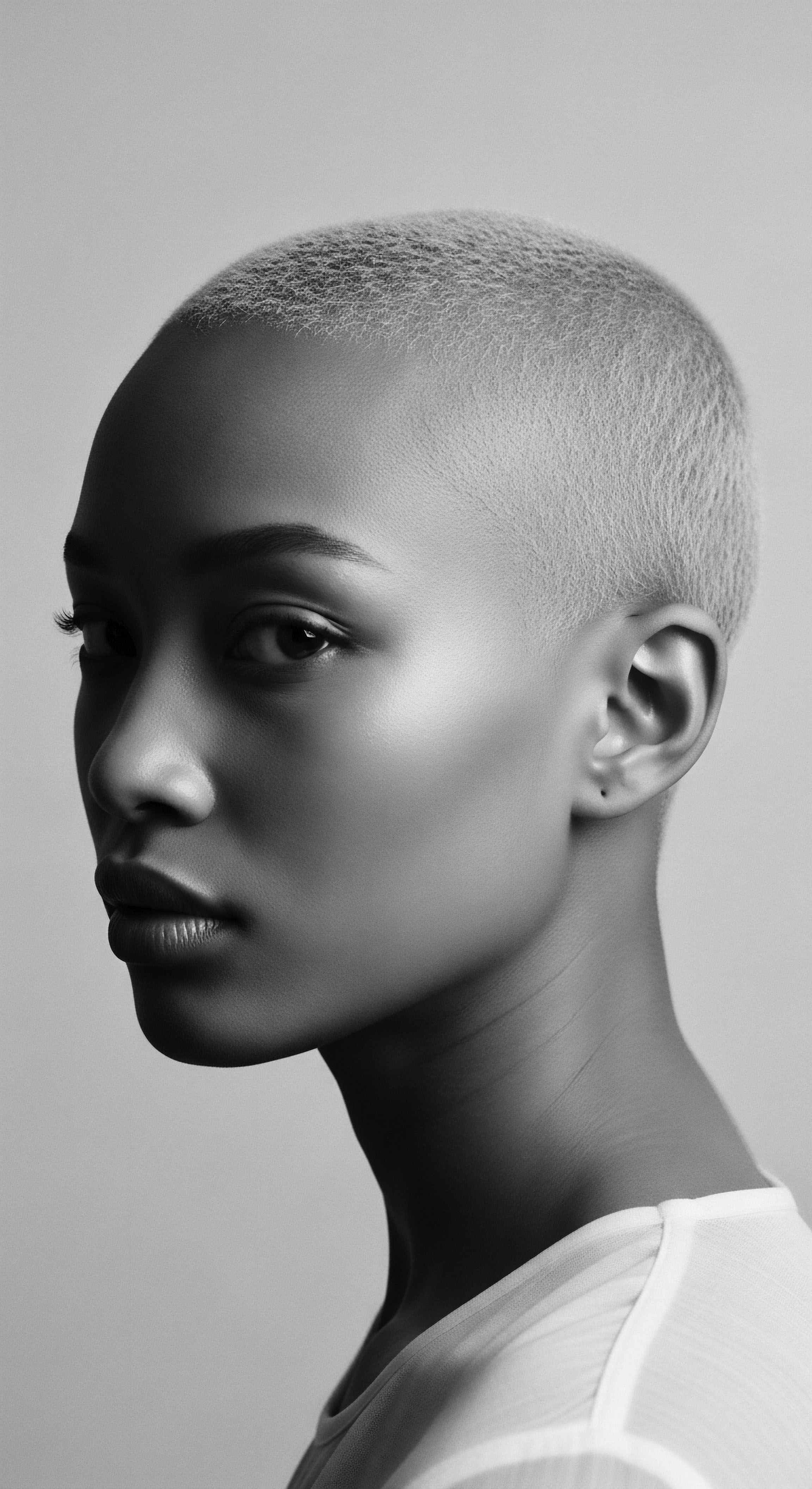
The Unbound Helix ❉ Voicing Identity and Shaping Futures
The Head Covering Culture also acts as a profound vehicle for voicing identity and shaping future narratives, particularly within communities grappling with historical oppression and contemporary challenges related to hair bias. The journey of textured hair, from being a source of pride in ancestral lands to becoming a target of legislation and discrimination during slavery and colonial periods, has deeply influenced the symbolic weight of head coverings. The Tignon Laws in 18th-century Louisiana stand as a powerful academic case study of this transformation.
Enacted in 1786 by Governor Esteban Rodríguez Miró, these laws mandated that free women of color cover their hair with a tignon. The intent was to diminish their allure and social standing, which was perceived as a threat to the established racial hierarchy and the sensibilities of white women.
Paradoxically, these oppressive laws catalyzed an extraordinary act of cultural resistance and artistic innovation. Rather than succumbing to the intended degradation, these women adorned their tignons with vibrant fabrics, intricate knots, and precious jewels, transforming a symbol of mandated inferiority into a powerful declaration of their inherent beauty, wealth, and unyielding spirit. This historical example reveals how a community can collectively redefine the meaning of an imposed sartorial dictate, reclaiming agency and reshaping their visual identity with resilience.
The tignon became an emblem of defiance, a subtle rebellion against a system designed to suppress their very being. This phenomenon underscores a critical aspect of Head Covering Culture ❉ its capacity to absorb and transmute oppressive intentions into profound acts of self-affirmation and cultural pride.
The ramifications of this historical resistance ripple into contemporary expressions of identity. In modern contexts, particularly within the Natural Hair Movement, the choice to wear head wraps or other coverings is frequently a conscious act of reconnecting with ancestral heritage and asserting Black identity outside of Eurocentric beauty norms. This movement challenges conventional dress codes and societal expectations that have historically marginalized textured hair, advocating for self-acceptance and cultural expression. The head covering becomes a deliberate statement, an echo of past struggles and triumphs, signifying a present commitment to cultural pride and an unbound future where diverse hair textures are celebrated in their natural splendor.
The evolution of head covering, from a tool of oppression to a symbol of defiant beauty and cultural pride, illuminates its potent role in shaping Black identity narratives across history.
Furthermore, the academic analysis of Head Covering Culture extends to its psychological and sociological impact. The act of choosing to cover one’s head can foster a sense of psychological safety and peace, particularly for individuals who have experienced hair discrimination or scrutiny. It provides a sanctuary, a private space where one’s hair is protected from external judgment, contributing to an individual’s overall well-being.
This often goes hand-in-hand with the assertion of cultural autonomy in spaces that have historically undervalued or misunderstood textured hair. The continuous policing of Black women’s hair, even in modern times, highlights the enduring relevance of head coverings as a form of self-preservation and protest.
| Intent of Law (Miró, 1786) To visually denote women of color as belonging to the enslaved class, regardless of their free status. |
| Response by Free Women of Color Embellished tignons with expensive fabrics, jewels, and intricate ties. |
| Intent of Law (Miró, 1786) To diminish their social standing and perceived attractiveness to white men. |
| Response by Free Women of Color Transformed head coverings into statements of beauty, wealth, and cultural defiance, attracting further attention. |
| Intent of Law (Miró, 1786) To enforce modesty and control self-expression. |
| Response by Free Women of Color Reclaimed the head covering as a powerful symbol of identity, creativity, and resistance against colonial authority. |
| Intent of Law (Miró, 1786) The Tignon Laws illustrate a critical historical instance where an oppressive mandate was subverted through artistic and cultural ingenuity, demonstrating the enduring power of head coverings as instruments of resistance and identity. |

Impact on Modern Identity and Well-Being
The legacy of Head Covering Culture extends into the contemporary landscape, shaping discussions around identity, self-acceptance, and wellness for individuals with textured hair. The freedom to style and protect hair as one chooses, including through head coverings, speaks to a broader movement of hair liberation.
- Reclamation of Self ❉ The deliberate choice to wear head coverings, particularly in public or professional settings, can be a powerful act of reclaiming cultural narratives and challenging Eurocentric beauty standards.
- Protective Styling and Hair Health ❉ The continued use of satin-lined bonnets, scarves, and wraps for night-time protection reflects a scientifically sound approach to preserving moisture, reducing tangles, and minimizing breakage in textured hair.
- Spiritual and Emotional Grounding ❉ For many, head covering offers a sense of grounding, a connection to spiritual beliefs, or simply a ritual of self-care that promotes mental and emotional peace. It can provide comfort and confidence, contributing to a positive self-perception and overall well-being.
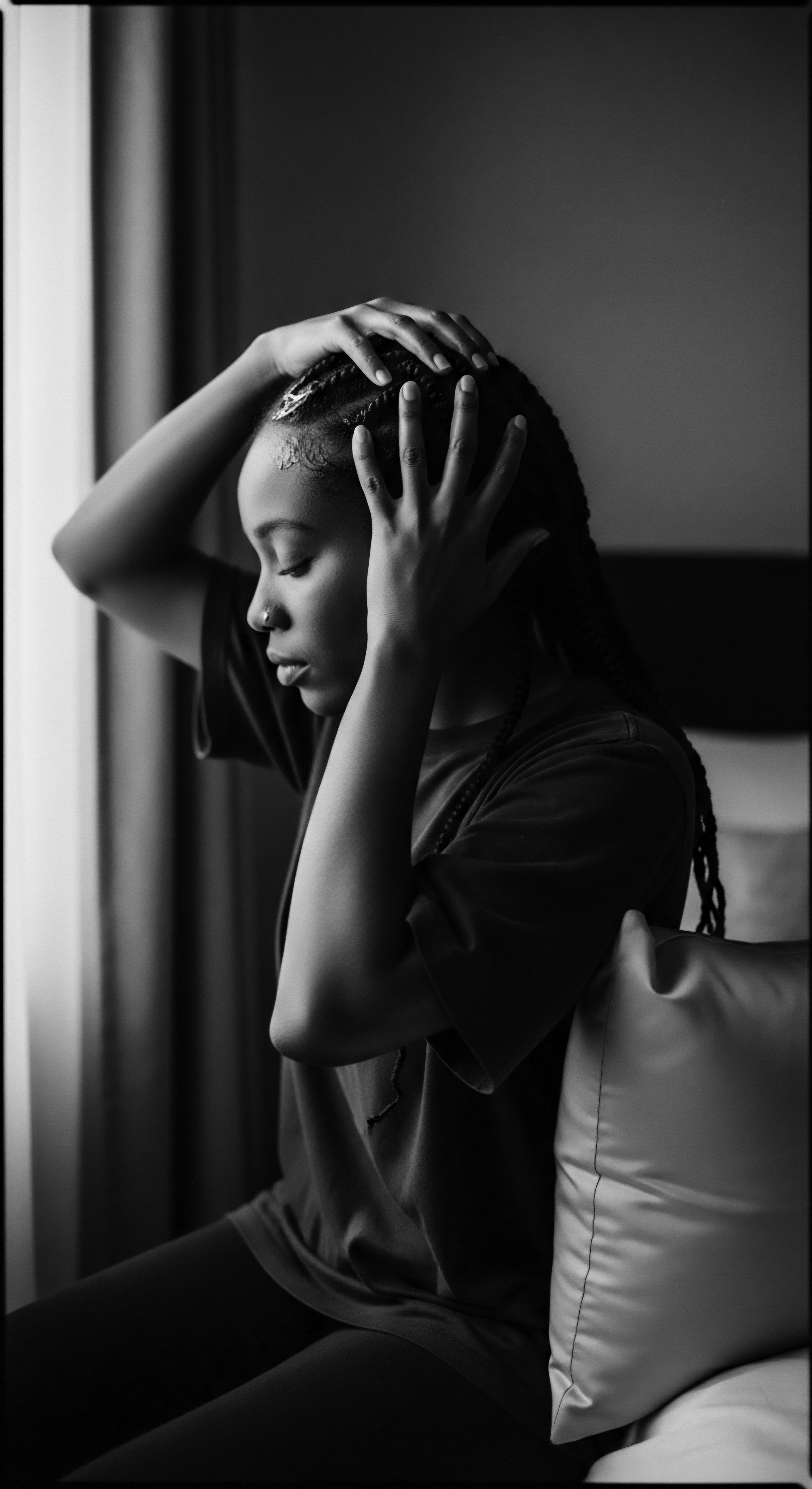
Reflection on the Heritage of Head Covering Culture
The journey through the Head Covering Culture, particularly as it relates to textured hair, reveals an intricate tapestry of human experience. It is a testament to the enduring power of ancestral wisdom, a living archive of resilience woven into every strand and every fold of fabric. The understanding of this practice, from its earliest biological and environmental imperatives to its complex role in shaping identity and resisting oppression, deepens our appreciation for hair as more than a physical attribute. Hair becomes a vessel of heritage, a silent storyteller carrying the echoes of generations.
We have seen how the pragmatic need to shield vulnerable hair from the elements evolved into a sophisticated language of status, spirituality, and defiance. The forced coverings of the enslaved became canvases for resistance, symbols transformed through the sheer force of human spirit. This history reminds us that even under the weight of external pressures, the internal commitment to self-definition and cultural preservation found ways to manifest. The head covering, in this light, is not merely an accessory; it is a declaration of selfhood, a quiet affirmation of dignity, and a vibrant connection to a collective past.
As we gaze upon the unbound helix of textured hair today, adorned or protected by a covering, we witness a continuity of ancestral practice. The satin-lined bonnets worn for nightly care are not simply modern conveniences; they are inheritors of ancient knowledge, echoes of hands that understood the delicate needs of curls and coils long ago. The vibrant wraps that grace public spaces are whispers of historical defiance, affirmations of cultural pride that refuse to be silenced.
This understanding invites us to approach our hair not just as a part of our physical being, but as a sacred extension of our lineage, deserving of reverence and mindful care. It encourages us to see the heritage in every coil, every kink, every wave, recognizing that the journey of textured hair is an ongoing narrative of beauty, strength, and unwavering spirit.

References
- JD Institute of Fashion Technology. (2021). Headwraps ❉ History and Evolution.
- sonson. (2021). The History of Headwraps and Black Culture.
- Afrostreet. (2025). The Cultural Significance of Headwraps & How to Wear Them ❉ Embracing Heritage and Style.
- YouTube. (2018). A Brief History on Head Wraps | BLACK GOLD | Black History Month Series.
- Obé Headwear. (2024). Significance of headwraps | Hair care.
- VICE. (2018). When Black Women Were Required By Law to Cover Their Hair.
- The New York Historical. Fashionable Rebellion.
- Wikipedia. Tignon law.
- Ari Party Hair. (2025). The History and Symbolism of Hair Wrapping Across the African Diaspora.
- Maroons.Black. (2025). The Tignon Law ❉ A History Of Resistance And Emancipation.
- Jelani Travel. (2025). Head Wrap History – From South Africa to Global Fashion.
- reframe52. (2024). Tignon Laws & Black Women’s Creative Resistance.
- Tignon Law ❉ How Black Women in Louisiana Turned Oppression into Fashion. (2025).
- PBS. Slave Women and the Head-Wrap – Slavery and the Making of America.
- That Wasn’t In My Textbook. (2022). History of Headwraps Unwrapped.
- ONYX MODE. (2025). Head Wraps ❉ Culture, Power & Style Across Generations.
- NOIR ‘N NOLA. (2019). The Tignon Law ❉ How Black Women Formed Decor Out of Oppression.
- The Natural Hair Advocate. (2016). Wrap it Up ❉ A Tribute to the Head Tie.
- Wilderness. (2015). The history & meaning of head wraps across Africa.
- Markiewicz, E. & Idowu, O. C. (2024). Exploring the Use of Natural Ingredients for the Protection of Textured Hair from Ultraviolet Radiation ❉ An In Vitro Study. Cosmetics, 11 (5), 102.
- The Open University. (2024). New OU research aims to improve wellbeing and reduce health risks for people with curly hair.
- Sleep.com. (2021). How a Hair Wrap Routine Protects More Than Just My Hair.
- BASF. (2020). Personal care for textured hair.
- Markiewicz, E. & Idowu, O. C. (2024). Exploring the Use of Natural Ingredients for Textured Hair UV Protection. ResearchGate.
